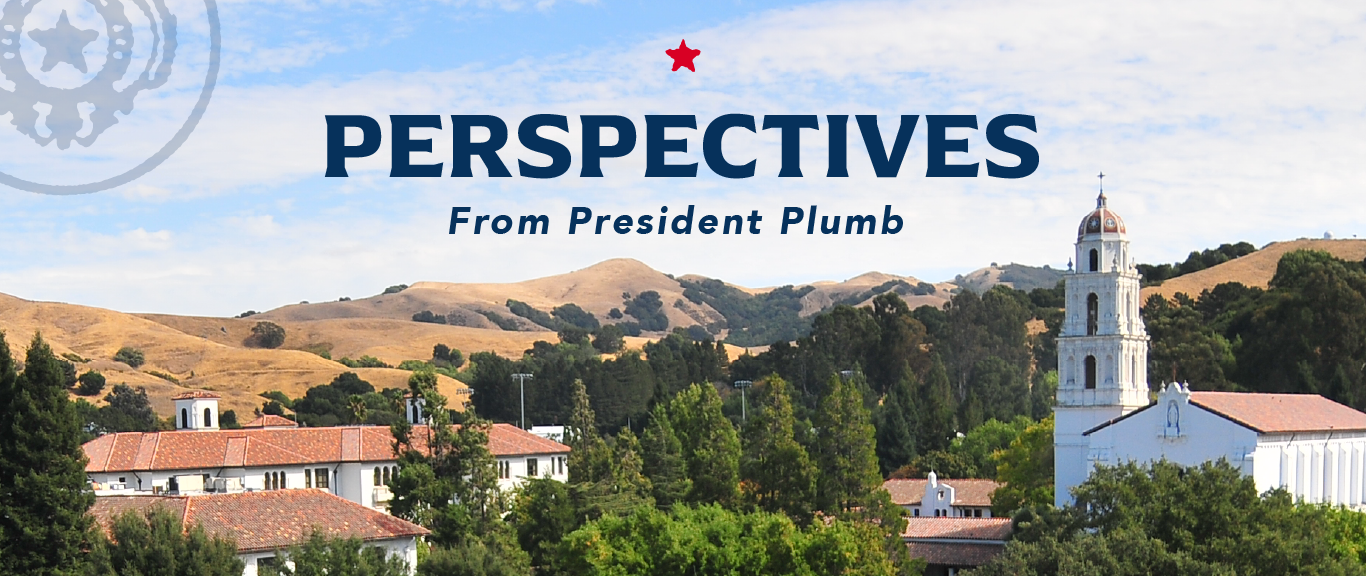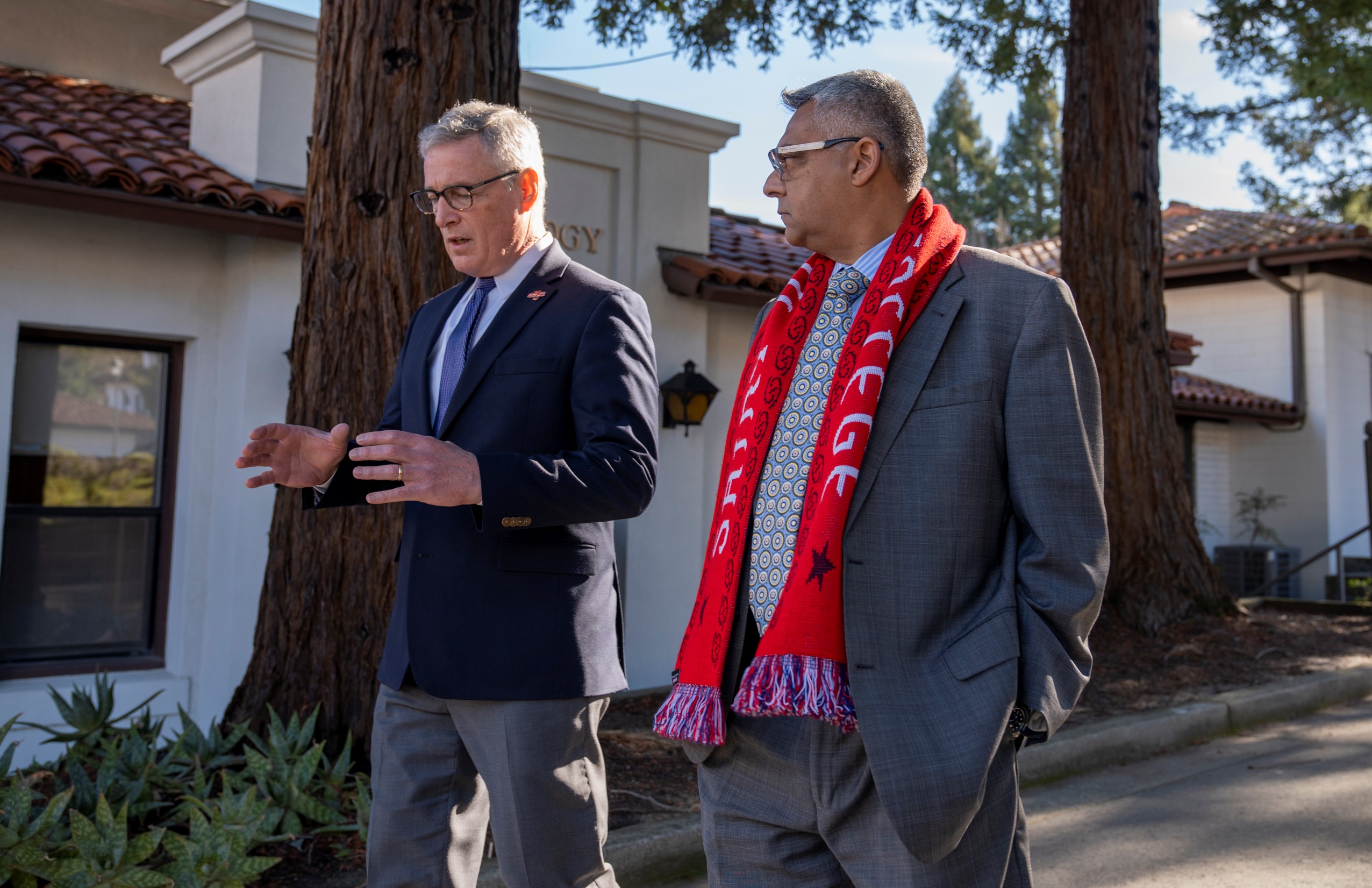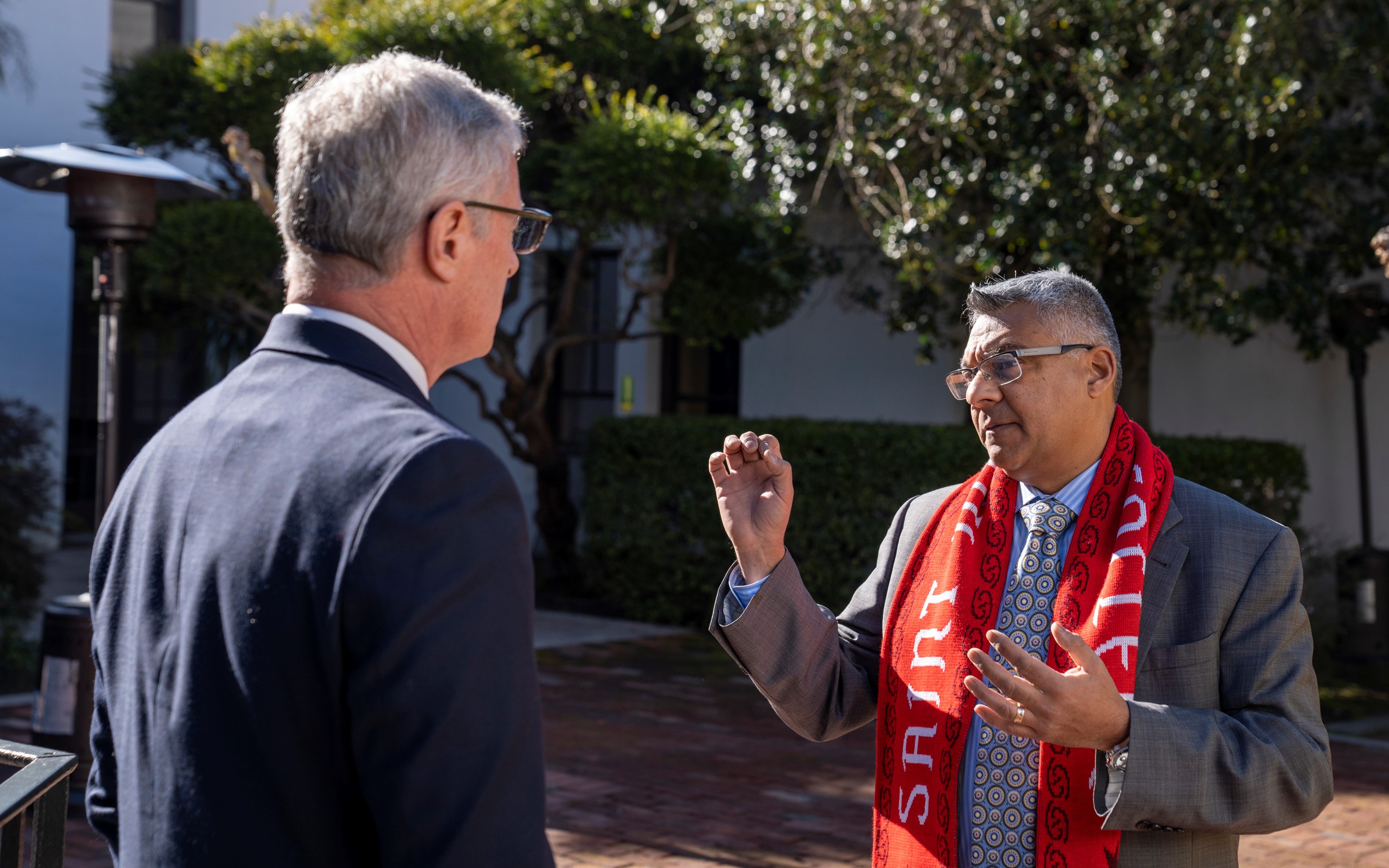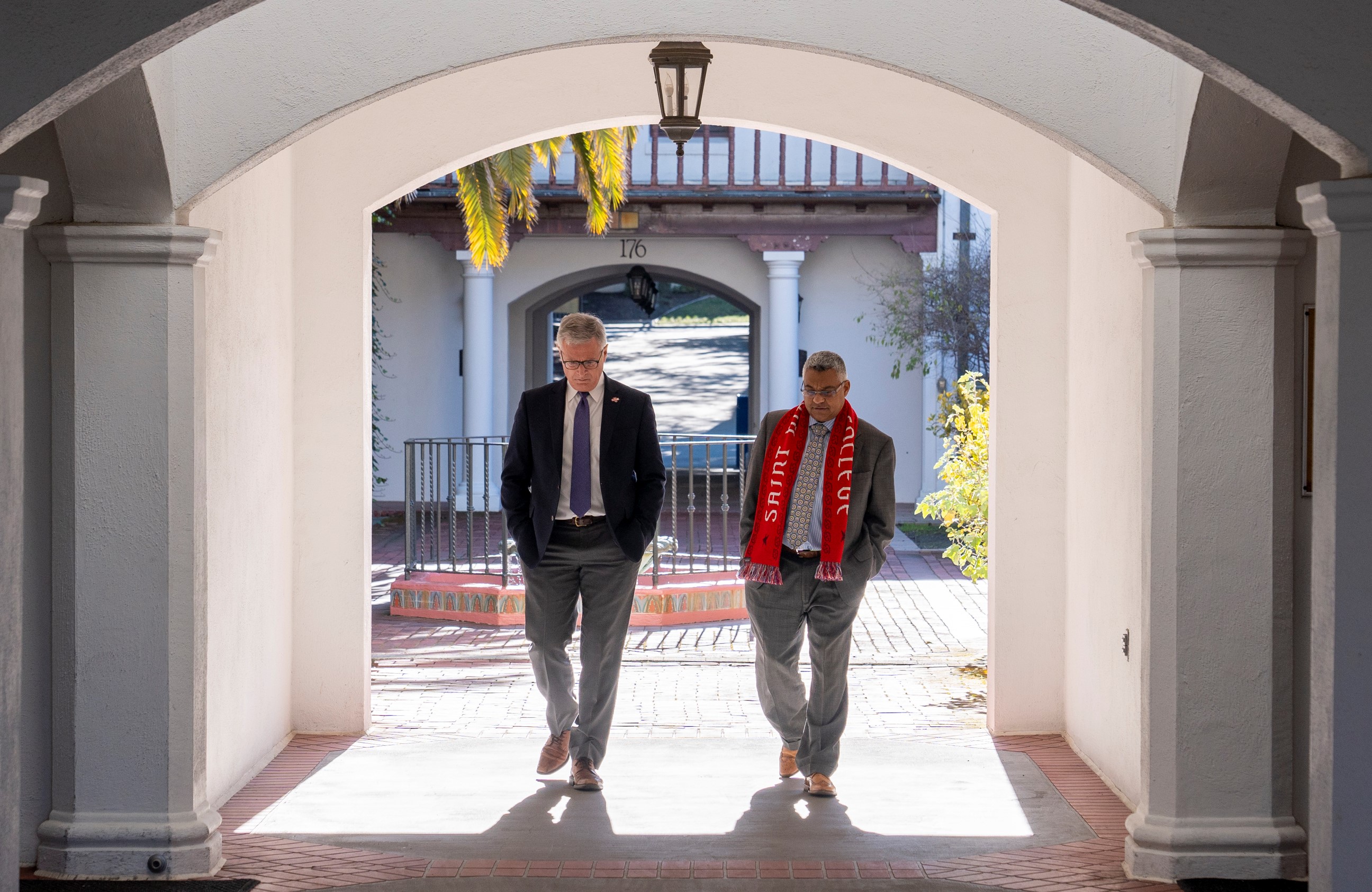
My Q&A with Manjit Sappal, Our New Executive Director of Campus Safety and Transportation
The safety of our students, faculty and staff members, and everyone else who steps foot on our campus is one of my most critical responsibilities as President of Saint Mary’s.
My goal is to make this a safe environment for all who study, teach, work, or visit here, and much of the day-to-day responsibility resides with our Campus Safety team.
It was Saint Mary’s good fortune, then, to land an exceptional talent in Manjit Sappal, who began his tenure as Executive Director for Campus Safety and Transportation on January 17. I’m grateful for the work of our search committee in conducting an exhaustive and ultimately successful search, and I walked around the campus with Manjit recently to discuss his priorities, strategies, opportunities, and challenges.

RICHARD PLUMB: What appealed to you most about this opportunity at Saint Mary’s?
MANJIT SAPPAL: As a Lamorinda resident for the last 25 years, I have known Saint Mary's College to have a stellar reputation; every former student I have met had nothing but positive things to say about their experience here. As I looked into the College for this role, I was impressed with the strong sense of community shared by everyone, as well as the level of kindness I experienced. The Lasallian Core Principles resonated with me, especially the values of Respect for All Persons, the focus on Inclusive Community, and the Concern for the Poor and Social Justice. The more I learned about the College, the more I knew that this is where I wanted to devote my efforts to keep this community safe.
RP: Our campus is small, intimate, beautiful, and serene. But, based on your unique expertise and early observations, what kinds of challenges or risks to Campus Safety might also be present?
MS: When you have a campus like ours that has a history of being safe and secure, you can run into complacency within the community and the notion that nothing will ever happen here. Complacency is dangerous. A critical incident such as an active shooter or major fire can happen anywhere and at any time, and we need to be fully prepared even if we think such incidents are unlikely.
The reality is that terrible things happen everywhere, including on college campuses, so the level of awareness and education within the community must be raised to prepare for a crisis. While we do not want to create fear, we do want our community to know what to do when a major incident occurs such as a fire, an earthquake, or a violent assault. We will be working on community preparedness and community resilience in the months ahead.
RP: Some might wonder why we link “Campus Safety” with “transportation.” Can you explain that to our campus community?
MS: Campus Safety focuses on a variety of safety-related issues and serves in a support role for everyone on campus, including those who use transportation. We manage the parking control through a parking permit process, issue citations for violations, and help with parking control during large events. The transportation aspect of our functions also includes managing the budget and contracts for the County Connection as well as the Lyft program. Since we are staffed 24/7 every day of the week, we handle issues around the clock—including those with transportation.
RP: Reflecting back on your previous roles, what experiences or strategies are you now drawing on that you believe can be applied here at Saint Mary’s?
MS: I have been fortunate enough to have a broad base of experience and technical knowledge, but no matter how much you know, it is meaningless unless you can build relationships and share the information. Building relationships and trust with our community is critical in order for us to partner with people to share information related to safety. If our community does not trust us to lead them during times of crisis then we have failed. Part of building this trust is to have a well-trained staff. I have experience in training, coaching, and mentoring others as well as contacts in related Campus Safety fields that I can use to assist with ongoing training of our staff.
I also have training and experience in coordinating a large-scale response to emergency incidents, to include those involving our regional partners, and this will benefit the campus with readiness and resilience if and when a large-scale crisis is at hand.
In my experience, any Campus Safety strategy that does not include our community in planning as well as implementation will not succeed. Everything that we do in the realm of Campus Safety will be done collaboratively and in support of our community needs. Those community needs will only be determined through open dialogue and relationships between us and everyone on campus.

RP: If I’m a student, faculty or staff member, or visitor to Saint Mary’s, what are one or two simple things to do or keep in mind that might help to make sure my time here on campus is safe?
MS: I can think of a couple of things. First off, if you are unfamiliar with where to go, you can usually find a Campus Safety Officer at the kiosk on the roadway when you enter Saint Mary’s. We are fortunate because there is only one roadway in and out of campus, so by design the campus has a buffer to increase safety. We are working on staffing the kiosk 24/7, but there may be times that the officer on duty must leave to handle an issue on campus. There are large maps posted throughout the campus that can help you get to where you need to go. I have also found that everyone I have asked for directions has gone out of their way to help—we just have that kind of close-knit community where people want to help.
Whenever you are on campus, or anywhere for that matter, you should always think about exit routes from buildings. Take a minute to familiarize yourself with where the stairs are, if you are above the first floor, and look for exit signs to familiarize yourself with egress in case you have to evacuate. This is a good habit to consider wherever you are, so you do not waste time during an emergency.
Lastly, pay attention to your surroundings. I often see people walking while looking at their phone—I’m guilty of this too!—and not paying attention to what is happening around them. This can lead to a variety of problems such as tripping or becoming a victim, because you are not paying attention. In general terms, offenders watch for victims that are not attentive and take advantage of them. Always pay attention to your surroundings at all times. This is good practice, no matter where you are.

Manjit clearly has some great insight into what it takes to make a campus like ours as safe as it can be, and I’m grateful for the leadership and know-how that he and his team bring to the table. I have no doubt they’ll continue working to create an environment at Saint Mary’s that makes us all feel safe and comfortable.
Saint Mary’s is well-known throughout the local community for its wonderful spaces, well-kept lawns, lovely buildings, and a joyful ambience driven by our students. But with such openness comes some degree of risk. Manjit and his team know they must be vigilant in their work approach in order to keep our campus safe and secure.
In fact, we must all be vigilant. Together, we can help make Saint Mary’s one of the safest campuses in the country.